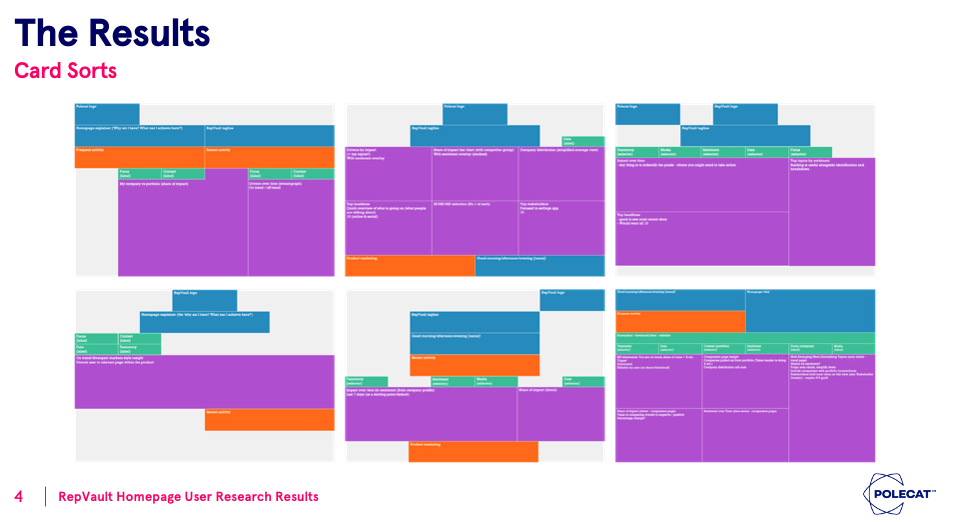Homepage testing for Repvault

The challenge
The homepage was to simply have a list of products with a welcome message. This was functional but not insightful. I had a belief that the design should contain highlights of the reputation profile or contain links to other product offerings from Polecat. The challenge was to present some initial thoughts and run some user research to test my theory and discover what is useful on the Hub Homepage.
Homepage testing is essential to understand what a user wants from the page and help prioritise the content. As the Lead UX Designer I was responsible for designing concepts for the homepage, running user testing and presenting ideas back to the Product Owner.
- Designed initial sketch to final design of Product Page.
- Developed UX strategy and measure product usage to qualify success
- Homepage testing ideas for a homepage to act as an entrance to the Polecat Hub.
The approach:
The homepage test is important because this page provides the user with ‘at a glance’ view of their company’s reputation. Because each user is different, we used a modified card sorting technique to identify what this means to each individual. Working with a Product Designer and a Data Visualisation Engineer i created a script, a digital user testing layout and conducted interviews with 6 participants.
Participants: Six Polecat employees, chosen for their user-centred roles such as Customer Service Managers.
Time allocated: 45 mins – 1hr
1- Modified card sort: Assembling a set of pre-determined components within a 16×24 grid. This task is designed to capture priorities, trade-offs, and to generally get a feel for what users associate with a high-level reputation view.
2- Devising the insight components: Drawing upon the existing RepVault insights for inspiration, what would you want to see on the homepage?

Conclusions:
- No/minimal scrolling: Consistent with the at-a-glance, high-level purpose of the page
- No more than 3 insights: Having a larger number could overcomplicate the user journey
- Share of Impact & ME/MD = high value insights: Should make a concerted effort to include these (or at least cover the need that they fulfil)
- Sentiment = high value metric: Some sentiment analysis would be a welcome addition
- Time as a comparative measure: Time should be used to create context, to give a sense of change / baseline to compare to
- Taxonomy & Date Range selectors: These were the two selectors that came up the most in testing. Focus/Context entities should be clearly communicated, but should be fixed.
The homepage test was very insightful and there was a significant throughput of clicks as users found what they were looking for. There was also less time spent on the page which suggests users were able to continue their journey quicker. Find out more about Polecats Hub here.
Project overview
Polecat Intelligence
Polecat Hub homepage, initial design idea and layouts. User Testing process, card sorting the results and the development of the design.